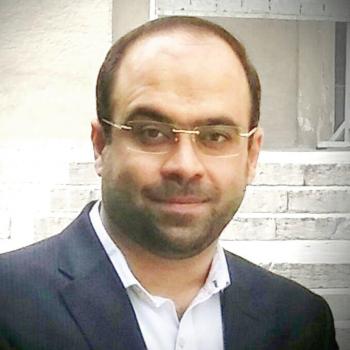
Seyed Hossein Hosseini Nourzad is an Assistant Professor of Construction and Project Management at University of Tehran and is also CP3P certified. He discusses the insights the program gave him and how the framework has helped with project delivery.
1. What first prompted you to a career in public private partnerships?
When I started my first job as a civil engineer in a mega infrastructure project, I realized the gap in planning and controlling of the project. So, I joined the PMO team of the project where I got involved in project management activities, like scheduling and budgeting. It was then when I realized the root causes of project failures are public inefficiency and lifecycle cost management. After studying several reports and papers, I discovered that one of the best solutions for such a problem is “Public-Private Partnership”. Hence, I decided to move to a BOT project. At the same time, I began my MBA training and I took the opportunity to define my MBA focus on economic influences of risks in BOT projects. It was the start of my journey to the world of PPP!
2. Can you give us a background on your (PPP) job role emphasizing on the PPP sector that it is related to?
During last 15 years, I worked on PPP projects in several sectors including water, transportation and health. Because of multidisciplinary background, my responsibilities in these projects spans two major class of activities: (i) financial modelling, economic assessment, commercial viability and value for money analysis; as well as (ii) project planning and management. In our projects, during early stages of planning, we develop a financial model as the heart of our analysis. My role as the leader of financial modeling is to use appropriate tools (e.g., COMFAR software or Microsoft Excel) to ensure that the financial model is flexible enough to analyze scenarios and provide a solid basis for our assessments. My other role, as a project management consultant is to ensure that the PM principles are effectively implemented throughout the entire project lifecycle.
My experience has not been limited to the private sector (as explained above), because I think, to succeed in PPP projects, both the public and private sectors should mature enough. Therefore, I did my best to contribute in our PPP policies and framework at the country level. I helped the government (i.e., the planning and budgeting organization) to establish related policies and regulations. I also consulted our Parliament to assess and enhance the recent PPP bill.
3. What prompted you to get certified, how did you hear about APMG’s PPP certification program?
It was in 2015 when I was surfing the web to study about recent movement in the PPP domain and I realized that the WBG and other MDBs had been collaborating to release a PPP program (including training and certification) by the help of APMG. The more I read about the program, the more I absorbed in it. In general, I see professional certifications as journeys to the worlds of such professions. In specific, I believe the CP3P program is the unique journey to the world of PPP. Therefore, soon after the launch of the program, I planned to sit for the foundation exam and I passed it successfully. The same happened for the launch of the preparation and execution levels. A fantastic three journey!
4. Why did you chose APMG’s PPP certification program and how did it help? You could include some details regarding the PPP Certification Guide that was a fundamental reference material for this certification.
PPP projects have complex structures with many stakeholders from public and private sectors with so many different perspectives. In such a complex structure, lack of common language leads to a chaotic environment, in which everybody is a loser. Also, lack of deep knowledge and expertise works as a catalyst for such a failure. These entire in mind, I believe there is no other way but a structured and sustainable program and CP3P is designed to be so. The two main features of the program are its comprehensiveness and coherency. It covers the whole project life cycle as well as the entire domains. It also creates a common language among all stakeholders and thus provides a win-win atmosphere for all of them.
In addition, the program benefits from the support of many prestigious institutions, including the Asian Development Bank (ADB), the European Bank for Reconstruction and Development (EBRD), the Inter-American Development Bank (IDB), the Islamic Development Bank (IsDB), the World Bank Group (WBG) and is partly funded by the Public-Private Infrastructure Advisory Facility (PPIAF). This is enough for a movement to succeed!
Another important strength of the CP3P program is its comprehensive and structured body of knowledge developed by several highly knowledgeable and experienced professionals led by Andres Rebollo. While there are a huge body of reports and studies about PPP, countries cannot easily connect their results to find a sound solution for their cases. The PPP Certification Guide provides a well-structured and solid (yet flexible) foundation for practitioners.
Overall, I anticipate the CP3P program to be a very effective and efficient movement in enhancing PPP practices globally. This is why I call the CP3P program as the unique absorbing journey to the world of PPP.
5. What are your key strengths and how have you used them in your current PPP role?
I like planning and problem-solving approach, thus I have worked with project management teams to establish solid PM framework and procedures. In addition, I have a strong background in analytical and computational tasks. Therefore, I have focused on financial modelling, economic assessment, and commercial viability of PPP projects. Finally yet importantly, I am good at considering the details in a micro level when having the big picture in mind simultaneously. It helps me a lot in PPP projects to ensure the lifecycle approach, which is vital in PPP projects.
6. What characteristics and skills do you think make a better PPP professional or a successful one?
The key points to succeed in PPP field include but are not limited to having deep knowledge and insight, knowing the common international language, building a sound relationship with other stakeholders in the field, using efficient and innovative approaches and having a whole lifecycle viewpoint. The good news is that the CP3P program covers all of the above.
7. What is next in line for you, how are you planning to utilize the knowledge gathered from doing the Foundation, Preparation and Execution exams of this PPP Certification Program?
Soon after the first step of getting certified as a CP3P (i.e., foundation), I started to build my international relations in the field. I negotiated with K-Infrastructure to collaborate as an accredited CP3P trainer. I also worked with UNESCAP on a project titled “Infrastructure Financing for Sustainable Development in Asia and the Pacific” which was launched recently. To promote PPP globally, I volunteer in WAPPP (World Association of PPP Units & Professionals) which resulted in initiating a mutual collaboration between WAPPP and APMG. In summary, I invested my last four years of life in the program and I do believe in its effectiveness for bridging the worldwide infrastructure gap. Therefore, I have many plans to be implemented internationally, next in line. Stay tuned!
8. What is your advice for newcomers or other PPP practitioners on helping deliver successful projects in the PPP world?
- Make sure you know the state-of-the-art guidelines. The PPP body of knowledge (i.e., the PPP Certification Reference Guide) is a great and comprehensive guide in the field.
- Be focused on developing a win-win relation between public and private sectors. To do so, you should know the common language of the field. Getting certified as a CP3P will help you a lot!
- To succeed in PPP projects, governments should start planning from very early stages of the project. To do so, it is very important for key stakeholders to have a whole lifecycle (WLC) approach. Again, the CP3P program promotes the WLC approach.
- Connect with other professionals in the field to ensure you know the best practices. To help you, WAPPP (World Association of PPP Units & Professionals) is designed to act as a home for PPP professionals. In addition, the CP3P international Linked-in group is formed to connect the PPP practitioners.


